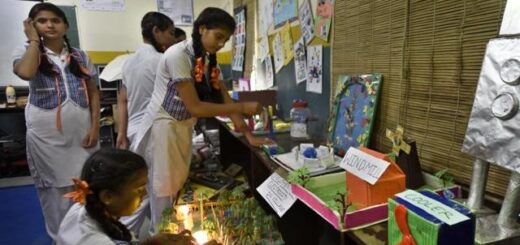National Current Affairs – UPSC/IAS Exams- 21st October 2019
Topic: International Relations
In News: South Asian University, the flagship educational centre of the South Asian Association for Regional Cooperation (SAARC), has been in news related to the appointment of its president.
More on the Topic:
- A government circular on the recruitment of the next president called for applications only from Indian candidates, prompting questions about the university adhering to the principle of rotation for the post among SAARC members.
- Limiting the process to Indian nationals would violate the university rules, as endorsed by the 38th SAARC Standing Committee (February 2011) and updated in May 2014.
About South Asian University:
- South Asian University (SAU) is an International University sponsored by the eight Member States of the South Asian Association for Regional Cooperation (SAARC).
- The eight countries are: Afghanistan, Bangladesh, Bhutan, India, Maldives, Nepal, Pakistan and Sri Lanka.
- South Asian University started admitting students in 2010, at a temporary campus at Akbar Bhawan, India.Its permanent campus will be at South Delhi, India.
- The degrees of the university are recognized by all the member nations of the SAARC according to an inter-governmental agreement signed by the foreign ministers of the 8 countries.
- South Asian University attracts students predominantly from all the eight SAARC countries, although students from other continents also attend. There is a country quota system for admission of students.
Source: Hindu
Topic: Environment and Ecology
In News: Asiatic Water Buffaloes died in the Pobitora Wildlife Sanctuary due to Anthrax. It is a serious infectious disease that is caused by a bacteria known as Bacillus anthracis.
More on the Topic:
About Asiatic Wild Buffalo:
- AWB is known to be found in the Central Indian Forests and is mostly restricted to the states of Assam, Arunachal Pradesh and Madhya Pradesh.
- Recently, it was found in the forests of Maharashtra after which the Maharashtra Government declared the Kolamarka forest area as a conservation reserve for the Asiatic Wild Buffalo.
- It has been listed as an endangered species by the International Union for Conservation of Nature (IUCN).
- It is listed under Schedule-1 of the Wild Life (Protection) Act, 1972.
- It is included in CITES Appendix-III and is legally protected in Bhutan, India, Nepal, and Thailand.
- Wild Water Buffalo is believed to be extinct in Bangladesh, Peninsular Malaysia, and on the islands of Sumatra, Java, and Borneo.
About Pobitora Wildlife Sanctuary
- Pobitora Wildlife Sanctuary has the second highest concentration of one-horned rhinos in Assam after Kaziranga National Park.
- It is often called ‘Mini Kaziranga’ due to similar landscape and vegetation.
- The wildlife sanctuary is home to endangered one-horned rhinoceros and the other mammals such as Leopard, Leopard cat, Fishing cat, Jungle cat, Feral Buffalo, Wild pigs, Chinese pangolins, etc.
- Water hyacinth (an invasive aquatic plant) is a major problem to the area especially to waterfowl, as it forms thick mats on the water surface.
Source: The Hindu
Topic: Modern Indian History
In News: The 76th anniversary of the formation of the Azad Hind Government will be celebrated on 21st October, 2019, at the Red Fort, Delhi.
More on the Topic:
- The Azad Hind Government, founded on 21st October, 1943 in occupied Singapore, was inspired by Netaji Subhash Chandra Bose who was the leader of Azad Hind Government and also the Head of State of this Provisional Indian Government-in-exile. Revolutionary leader Rash Behari Bose was designated as the supreme advisor.
- It supported by the Empire of Japan, Nazi Germany, Italian Social Republic, and their allies.
- The government proclaimed authority over Indian civilian and military personnel in Southeast Asian British colonial territory and prospective authority over Indian territory to fall to the Japanese forces and the Indian National Army during the Japanese thrust towards India during the Second World War.
- However, while it possessed all the nominal requisites of a legitimate government, it lacked large and definite areas of sovereign territory until Japan gave it nominal authority of the Andaman and Nicobar Islands in 1943 and the occupation of parts of Manipur and Nagaland.
- Japanese officials made all the decisions, and throughout its existence it was entirely dependent on Japanese support. The islands were re-occupied by the British in 1945.
- Immediately after the formation of the government-in-exile, Azad Hind declared war against the Anglo-American allied forces on the Indo-Burma Front. Its army, the “Azad Hind Fauj” (Indian National Army or the INA), fought against the British Indian Army and the allied forces as part of the Imperial Japanese Army in the Imphal-Kohima sector.
- Bose’s death was seen as the end to the Azad Hind movement. The Second World War also ended in 1945 with the defeat of the Axis powers.
Significance:
- Netaji Subhas Chandra Bose was convinced that armed struggle was the only way to achieve independence for India. The role of Azad Hind Fauj or the Indian National Army (INA) had been crucial in leaving behind a much needed impetus to India’s struggle for Independence.
- Azad Hind government was actively involved in nation building and had even started its own bank, currency, civil code and stamps.
- According to experts, Netaji laid down the foundation for equal opportunity for women in armed forces, through the formation of Rani Jhansi Regiment.
- India is carrying forward this legacy in true means and women will be given equal opportunity for permanent commission in armed forces.
- The existence of the Azad Hind Government gave a greater legitimacy to the independence struggle against the British.
Source: PIB
Topic: Culture
In News: The chemical-based colours used during the Petta Thullal ritual are proposed to be banned by the Kerala State Pollution Board recently.
More on the Topic:
- The presence of hazardous metals, including lead, arsenic and cadmium in the colours used during the ritual, causes skin troubles as well as pollution of water and soil.
- The usage of an organic vermilion has been suggested to minimize the environmental impact.
- Vermilion is a red colour pigment, originally made from the powdered mineral cinnabar.
- Petta Thullal is the ritualistic sacred dance to celebrate the victory of good over evil in the legend of Lord Ayyappa.
Source: Hindu
Topic: International Affairs
In News: The Rohingya refugees living in Bangladesh camps have agreed to move to Bhashan Char Island in the Bay of Bengal.
More on the Topic:
- Rohingyas are an Ethnic group, mostly Muslims. They were not granted full citizenship by Myanmar.
- They were classified as “resident foreigners or associate citizens”. They speak a dialect of Bengali and not Burmese. Ethnically they are much closer to Indo-Aryan people of India and Bangladesh than to the Sino-Tibetans of the Country.
- Few years ago, religious and ethnic tensions between the Rohingya Muslims and the Rakhine Buddhists (who make up the majority of the population in Myanmar) escalated into widespread, deadly rioting.
- Hundreds of thousands were forced to flee. Since then, ongoing violent attacks have forced even more people to leave their homes.
- The Myanmar Government says that Rohingya people are not Burmese citizens – but the Rohingya have been living in Myanmar for generations. Today, they are a people with no home or citizenship.
- Rohingya people are being widely abused and exploited. They are one of the most persecuted minorities in the world.
- There were an estimated 1 million Rohingya living in Myanmar before the 2016–17 crisis. By December 2017, an estimated 625,000 refugees from Rakhine, Myanmar, had crossed the border into Bangladesh since August 2017.
- The India Ministry of External Affairs has deployed Operation Insaniyat to provided assistance to Bangladesh in response to humanitarian crisis being faced by it due to large influx of Rohingya refugees from Myanmar.
Rohingya crisis and India:
- India hasn’t ratified international convention validating refugee status in the country. However, India has done the best it can in the circumstances.
- India built 250 homes for the refugees in Myanmar’s Rakhine province for when they return.
- So far, the Indian approach towards the Rohingya crisis has been viewed as contradicting its traditional position on refugees (Including deportation).
Bhashan char Island:
- Bhashan Char is located in the estuary of the Meghna river.
- It falls in an ecologically fragile area prone to floods, erosion and cyclone.
Source: Hindu
Topic: Polity and Governance
In News: The Home Ministry is all set to overhaul the Indian Penal Code designed by the British. Rebooting the code introduced by the British in 1860 was necessary as it is primarily based on the spirit of “master and servant”.
More on the Topic:
- Recently the Ministry wrote to all States and Union Territories seeking suggestions to amend various sections of the IPC.
- Two committees comprising legal luminaries have also been constituted by the Ministry.
- The IPC replaced Mohammedan Criminal Law, which had a very close relationship with Islam. Thus, the IPC laid the foundation of secularism.
- The code was drafted in 1860 on the recommendations of first law commission of India established in 1834 under the Charter Act of 1833 under the Chairmanship of Lord Thomas Babington Macaulay.
- It was widely appreciated as a state-of-the-art code and was, indeed, the first codification of criminal law in the British Empire.
- It is the longest serving criminal code in the common-law world. Most of the commonwealth nations follows the IPC and legislators would find it difficult to improve it in terms of precision, comprehensibility, comprehensiveness and accessibility.
Why it needs a review:
- IPC, 1860 requires a thorough revision to meet the needs of the 21st century. In 1860, the IPC was certainly ahead of the times but has been unable to keep pace since then.
- Macaulay had himself favoured regular revision of the code whenever gaps or ambiguities were found or experienced.
- Even though the IPC has been haphazardly amended more than 75 times, no comprehensive revision has been undertaken in spite of the 42nd report of the law commission in 1971 recommending it , the amendment bills of 1971 and 1978 lapsed due to the dissolution of the Lok Sabha.
- Most amendments have been ad hoc and reactive, in response to immediate circumstances like the 2013 amendment after the Delhi gangrape case.
Needed Reforms:
- A re-examination of the sedition law, inserted in 1898, is necessary.
- The offence of blasphemy should have no place in a liberal democracy and, therefore, there is a need to repeal Section 295A, which was inserted in 1927.
- Criminal conspiracy was made a substantive offence in 1913. The offence is objectionable because it was added to the code by the colonial masters to deal with political conspiracies.
- Under Section 149 on unlawful assembly, the principle of constructive liability is pushed to unduly harsh lengths.
- The distinction between “culpable homicide” and “murder” was criticised even by Stephen as the “weakest part of the code”, as the definitions are obscure.
- Sexual offences under the code reveal patriarchal values and Victorian morality. More comprehensive and fore sighted laws are needed.
Source: PIB



















